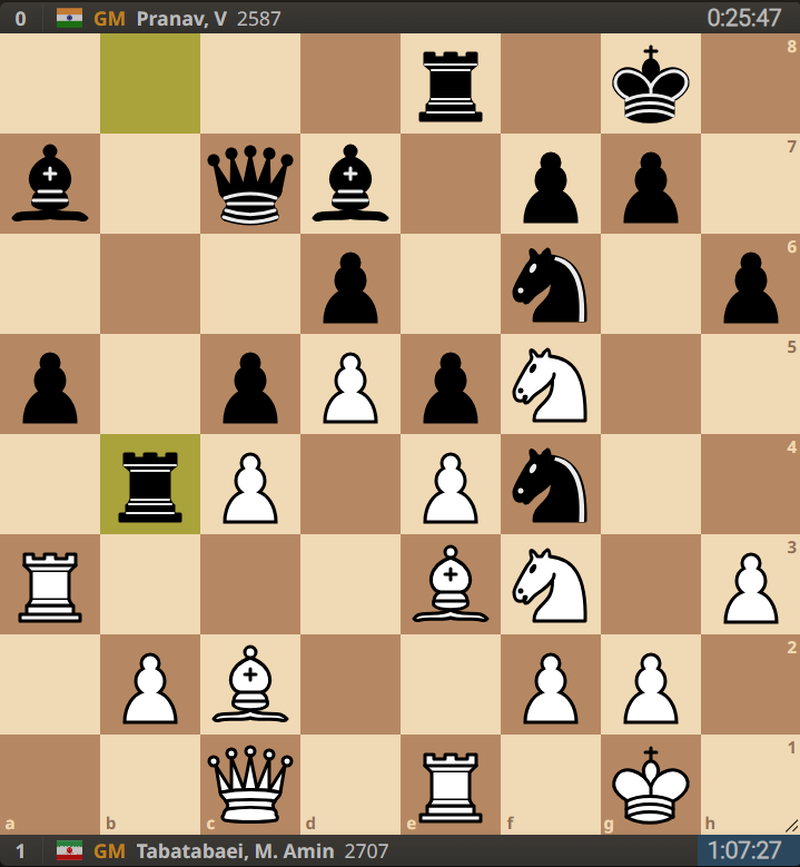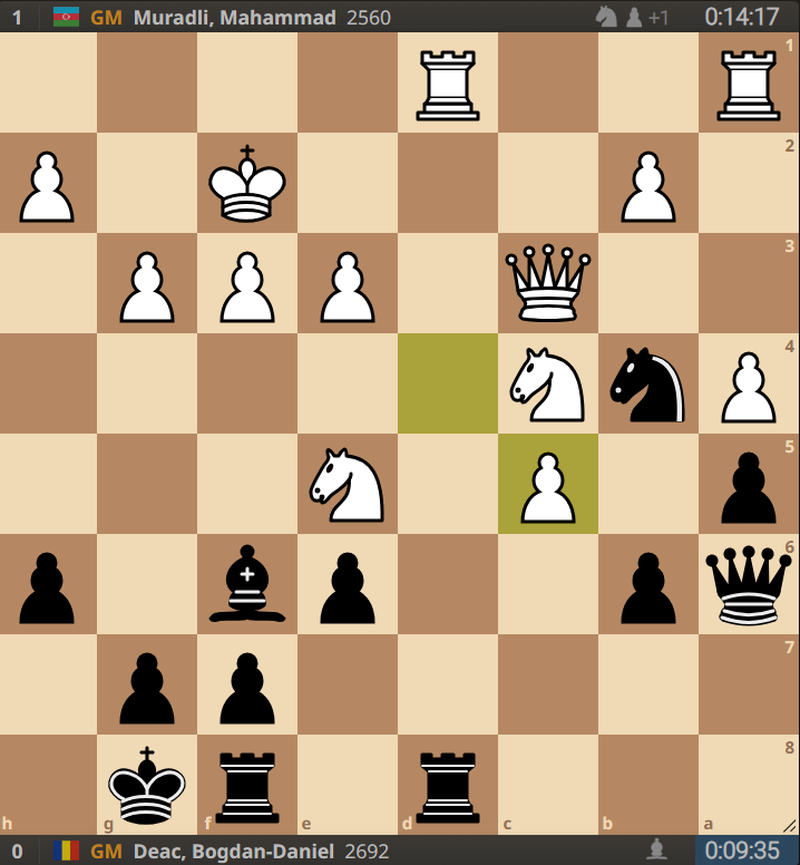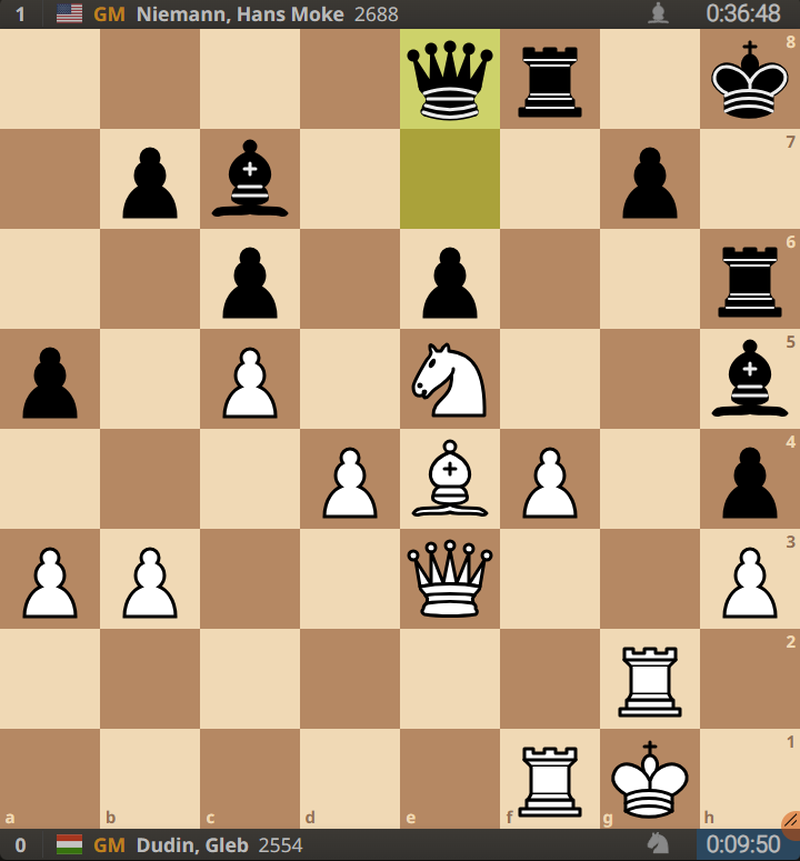
Converting A Massive Advantage (and why it's so hard)
Enjoy explained examples from Round 1 of the 2024 Sharjah Masters!Introduction
As part of my work as a chess professional, I review the high-level games played for the day, seeking instructive games and puzzles to share. Some of these gems I share in my free content, but others, I reserve exclusively for my dedicated students, like you.
In this post, I'll share a few intriguing examples from Round 1 of the 2024 Sharjah Masters. These puzzles are not your average chess problems-they will genuinely test your strategic thinking and decision-making skills. You'll have the chance to either play as well as a strong GM, or even play better than they did! So you can take your time with each of these puzzles.
Puzzle 1
What should White play here? (Note - the solution is just below the diagram)

There are many good moves for White if you want to play something like 24.Bxf4 to grab material, or 24.N3h4 to build up the pressure, I can hardly fault the decision.
However, there were many examples in Round 1 where a player had a winning position, missed a clear chance to end the game directly, and then later failed to win. So, we should take the opportunity to win the game outright when it presents itself.
Tabatabaei played 24.Nxh6!, with the point that 25.Bxf4 exf4 26.Qxf4 Kg7 (else Qxh6 in the worst case) 27.Nh2! clears the way for a decisive Rg3 to win the f6-knight. (And 27...Nh5 28.Qh4 changes nothing). In the game, Black played 24...Kf8 25.Bxf4 exf4 26.Qxf4 and White soon converted his material and attack into victory.
But how can we tell that such an attack will be successful for White (even if we can't calculate it until the end?)
I normally only share this framework with my students, but today is your lucky day.
We need at least two of these four 'attacking advantages' to have excellent chances of a successful attack on the king:
1. More attackers than defenders around the king;
2. Weaknesses around the enemy king;
3. Initiative (flow of threats);
4. Space advantage around the king.
In the position after 27.Nh2, White has all four of these advantages at once, so it's not surprising that the game is over quickly. (Note, by the way, that 27...Ng8 28.Rg1 Kf8 is not helping, as 29.Rxg8! Kxg8 30.Qxh6 leaves Black no defence to either e5! followed by Bh7, or simply the Re3-g3 rook lift).
Puzzle 2
This time, we'll see an instance where Black failed to capitalize on his advantage.
What would you play here as Black?

This is the sort of position where, when it's set as a puzzle, it's very easy to fool yourself into thinking, 'Of course I'd have seen that'.
But be honest with yourself - if your opponent had played 25.dxc5 in an actual game (without someone to tap you on the shoulder and say there's a good move), would you have automatically recaptured 25...bxc5 without any thought?
One of the skills I teach my students is the importance of unassuming thinking—not jumping to conclusions instantly but instead checking if our assumptions are correct.
In the game, Black failed to look for alternatives, and while he is still better after 25...bxc5, he later lost his advantage, and even later lost the game. (Those puzzles will be saved for my students)
Well done if you spotted the intermediate move of 25...Rd5!. The threat is to play e.g. 26.cxb6 Bxe5 27.Nxe5 Rc8, when White has no defence to the threat of ...Rc2 and ...Qe2 for a mating attack on White's king. (Note that 26.c6 Bxe5 27.Nxe5 Rc5 has the same idea).
But other defences also fail to save White - 26.Rxd5 exd5 27.Nxb6 Bxe5 wins a piece (28.Qxe5 Nd3 forks king and queen), and 26.f4, albeit more solid, still fails to 26...Bxe5 27.fxe5 Rxc5 28.b3 Nc6 29.Qb2 (else ...Nxe5!) 29...b5 30.axb5 Qxb5, and White simply has too many weaknesses to hold (e5, b3, his king, even ...Rxc4! is a direct threat).
Puzzle 3
This puzzle is from a position that is not an immediate win for White, but where it is nonetheless clear that White has the advantage.
White has been outplaying his well-known opponent thus far, but in this position, he drifted and lost nearly all his advantage.
Can you do better? It's White to play.

The way to solve this exercise is to correctly apply the technique of 'prophylaxis'. (For those who don't know, prophylaxis is where we consider the opponent's ideas while making moves that we want to play anyway).
So, what was the idea of Black's last move, 31...Qe7-e8?
This quickly became apparent in the game after the overly patient 32.Bd3?, Black played 32...Bxe5! 33.Qxe5 Bg6!, stabilising the position with the exchange of bishops. Black got in ...Qf7/...Bf5 and later even won by outplaying his opponent in an endgame.
However, if Black is unable to get in ...Bxe5/...Bg6, his position remains passive, and White will maintain complete control over the position.
Therefore, the solution is to play 32.Qd3!, preventing the plan of ...Bxe5/...Bg6. It is very tough to suggest a good move for Black; changing the position with 32...Bxe5 33.dxe5 Qd8 may be best, but Black's h5-bishop and h6-rook make a sorry impression, and 34.Qd6! (moving along the open file to recapture with a pawn; a standard technique in the fight for the open file) leaves Black with relatively slim chances of survival.
You get partial credit for choosing 32.f5 or 32.Ng4, which still keeps a clear advantage, but somewhat misses the heart of the position.
Improving Your Visualization
Why not use the 'Study' feature to show these examples?
The first reason is that it only shows as a URL when I share it, which would take you away from the post.
The second reason, however, relates directly to chess improvement.
One of the most essential skills for a chess player is our visualisation skill (Heisman liked to call it 'board vision' in his works for beginner/intermediate players).
By forcing you to keep the position in your head, and play through the variations mentally (rather than on a board), you are significantly improving your ability to visualise positions and variations.
Perhaps you are finding it hard to visualise all the variations clearly (and the post gets fewer views because of that). But what matters is the effort, not how much you got things right - and that deliberate practice of trying to see that little bit further will pay dividends in your chess games.
Want To Improve This Skill?
I am giving a live training on' How To Convert An Advantage' at 12-1pm Sydney time today (2.5 hours from the time this post was published) at my free FB group, 'Adult Chess Improvers'.
Here's the poster:

And here's the link to register for the event!
See you there!
PS - If you see this post after the live has happened, you'll still be able to catch the replay by joining the group here.
More blog posts by Craze

The 9 Historical Developments Of The London - Part 1
Discover how the London's ideas and theory evolved to the state it's at today!
Why I Was Stuck At 1800 For Two Years - Part 1
Many of you have asked me about this story...so let's tell it!
What Improvers Often Misinterpret About Chess Principles
How Helpful Are Chess Principles For Making Good Moves?